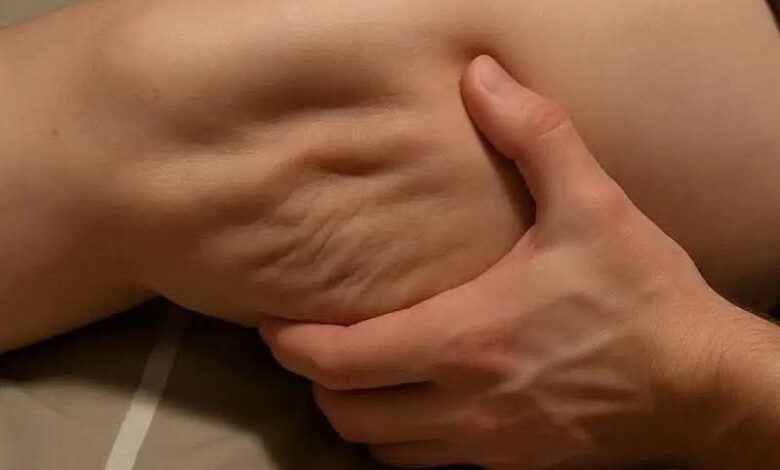Understanding Nighttime Leg Cramps: Causes, Prevention, and Treatment

Why Nocturnal Leg Cramps Disrupt Your Sleep
Nocturnal leg cramps represent one of the most frustrating sleep disorders that affect millions worldwide. These sudden, involuntary muscle contractions can transform peaceful rest into painful awakenings, leaving sufferers searching for effective leg cramp remedies and muscle pain relief solutions.
This comprehensive health guide explores the underlying mechanisms of nighttime muscle spasms and provides evidence-based strategies for prevention and treatment.
What Are Nighttime Leg Cramps? Understanding the Condition
Nighttime leg cramps, medically termed nocturnal leg cramps or sleep-related leg cramps, manifest as sudden, intense muscle contractions primarily affecting the calf muscles, though they can also impact the thigh and foot muscles. These painful episodes typically occur during sleep or upon waking, creating significant sleep disturbances.
The hallmark symptoms include:
- Sharp, shooting pain in affected muscles
- Visible muscle hardening and tension
- Temporary inability to move the affected limb
- Residual muscle soreness lasting hours or days
Risk Factors and Root Causes Behind Muscle Cramps
Understanding the risk factors for leg cramps helps identify who might be most susceptible to these painful episodes:
High-Risk Demographics:
- Pregnant women, particularly in the third trimester
- Adults over 50 years of age
- Athletes and individuals engaging in intense physical activity
- People with chronic health conditions
Medical Conditions Associated with Leg Cramps:
- Diabetes and blood sugar disorders
- Kidney disease and dialysis patients
- Peripheral artery disease and circulation problems
- Thyroid disorders and hormonal imbalances
- Neurological conditions affecting muscle function
Primary Causes of Nocturnal Muscle Cramps:
The development of nighttime leg cramps often results from multiple interconnected factors:
Electrolyte Imbalances: Deficiencies in essential minerals, particularly magnesium deficiency, potassium deficiency, and calcium imbalances, can trigger muscle cramping episodes.
Dehydration Effects: Insufficient fluid intake disrupts normal muscle function and increases cramping susceptibility.
Poor Blood Circulation: Reduced blood flow to muscles, especially during prolonged sitting or lying positions, contributes to cramp development.
Medication Side Effects: Certain medications, including diuretics, blood pressure medications, and cholesterol-lowering drugs, may increase cramping frequency.
Proven Prevention Strategies for Leg Cramp Relief
Implementing targeted prevention strategies significantly reduces the frequency and severity of nighttime muscle cramps:
Hydration and Nutrition Optimization:
- Maintain consistent daily water intake (8-10 glasses)
- Follow a balanced diet rich in essential minerals
- Consider magnesium supplements and potassium-rich foods
- Limit alcohol consumption and caffeine intake, especially evening consumption
Physical Activity and Stretching Routines:
- Perform daily calf stretches and hamstring stretches
- Engage in regular, moderate exercise to improve circulation
- Implement pre-bedtime stretching routines
- Practice gentle yoga poses targeting leg muscles
Sleep Environment Improvements:
- Ensure proper bedding that doesn’t restrict leg movement
- Maintain optimal room temperature
- Use supportive pillows for proper leg positioning
Immediate Treatment Options for Active Leg Cramps
When nocturnal leg cramps strike, quick action can minimize pain and duration:
Immediate Relief Techniques:
- Gentle muscle massage using circular motions
- Gradual muscle stretching, pulling toes toward the shin
- Brief walking to stimulate blood circulation
- Application of heat therapy or cold therapy as tolerated
Advanced Pain Management:
- Over-the-counter pain relievers for persistent soreness
- Topical muscle relaxants and anti-inflammatory creams
- Compression therapy using specialized leg sleeves
- Professional massage therapy for chronic cases
When to Seek Medical Attention for Persistent Cramps
While occasional leg cramps are generally harmless, certain warning signs warrant medical evaluation:
Consult Healthcare Professionals When:
- Cramps occur multiple times weekly
- Pain severity significantly impacts sleep quality
- Muscle weakness or numbness accompanies cramping
- Skin color changes or swelling develops
- Cramps don’t respond to standard home remedies
- Family history of circulation disorders exists
Medical Treatment Options:
Healthcare providers may recommend prescription muscle relaxants, specialized physical therapy, or investigation of underlying medical conditions contributing to cramping episodes.
Long-term Management and Lifestyle Modifications
Successfully managing nighttime leg cramps requires sustained lifestyle changes and ongoing attention to risk factors:
Comprehensive Approach:
- Regular monitoring of mineral levels through blood tests
- Consistent exercise routines promoting muscle health
- Stress management techniques reducing overall muscle tension
- Regular medical check-ups for underlying condition management
Conclusion: Taking Control of Nighttime Leg Cramps
Nocturnal leg cramps, while uncomfortable and disruptive, respond well to comprehensive prevention strategies and appropriate treatment approaches. By understanding the underlying causes, implementing targeted prevention measures, and knowing when to seek professional medical care, individuals can significantly reduce the impact of these painful episodes on their sleep quality and overall well-being.
Remember that persistent or severe cramping episodes warrant professional medical evaluation to rule out underlying health conditions and develop personalized treatment plans for optimal muscle health and sleep restoration.